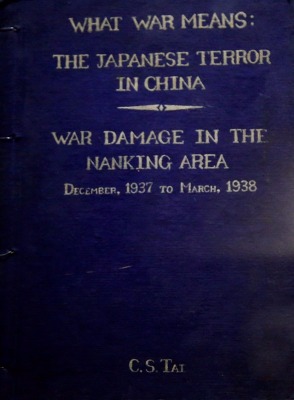
Two accounts of the massacre written by expats. (China Daily)
Bloodbath
On Dec 13, 1937, after a number of fierce clashes with Chinese troops, members of the Imperial Japanese Army occupied the city of Nanking (now Nanjing, capital of Jiangsu province) during the War of Resistance Against Japanese Aggression (1931-45).
For the next six weeks, they went on a killing spree, butchering an estimated 300,000 civilians and unarmed soldiers, while maiming and raping countless others. The tragedy was followed by nearly eight years of Japanese occupation, the end of which marked Japan's defeat in China and the wider Asian theater of war.
Today, Wu is the curator of a memorial museum in Nanjing dedicated to the darkest chapter in the city's contemporary history. It is the only private museum in the country dedicated to the Nanjing Massacre.
"If the shock I felt that winter afternoon represented some sort of call, it was too faint for me to answer. I waited another 20 years, during which I quit my job at the university, started my own business, opened a factory and began dabbling in collecting," he said.
Photo album
Then came another winter day; this time in 2005. While conducting his usual treasurehunt in one of Nanjing's open-air antiques markets, Wu's eyes fell on an old photo album.
"While containing no scenes of violence, the grainy black-and-white pictures were somehow familiar," he said.
"There was little of interest in the photos-just rather mundane depictions of army life. But for a discerning pair of eyes, the background spoke for itself. Before December 1937, it was the campus of Southeast University (in Nanjing), but after that, it housed the camps of the occupying troops," he said.
Today, the album shares a 2,000-square-meter space with more than 1,000 other exhibits in Wu's dimly lit third-floor factory workshop-turned-museum, though there are 5,700 items in the collection in total.


















































